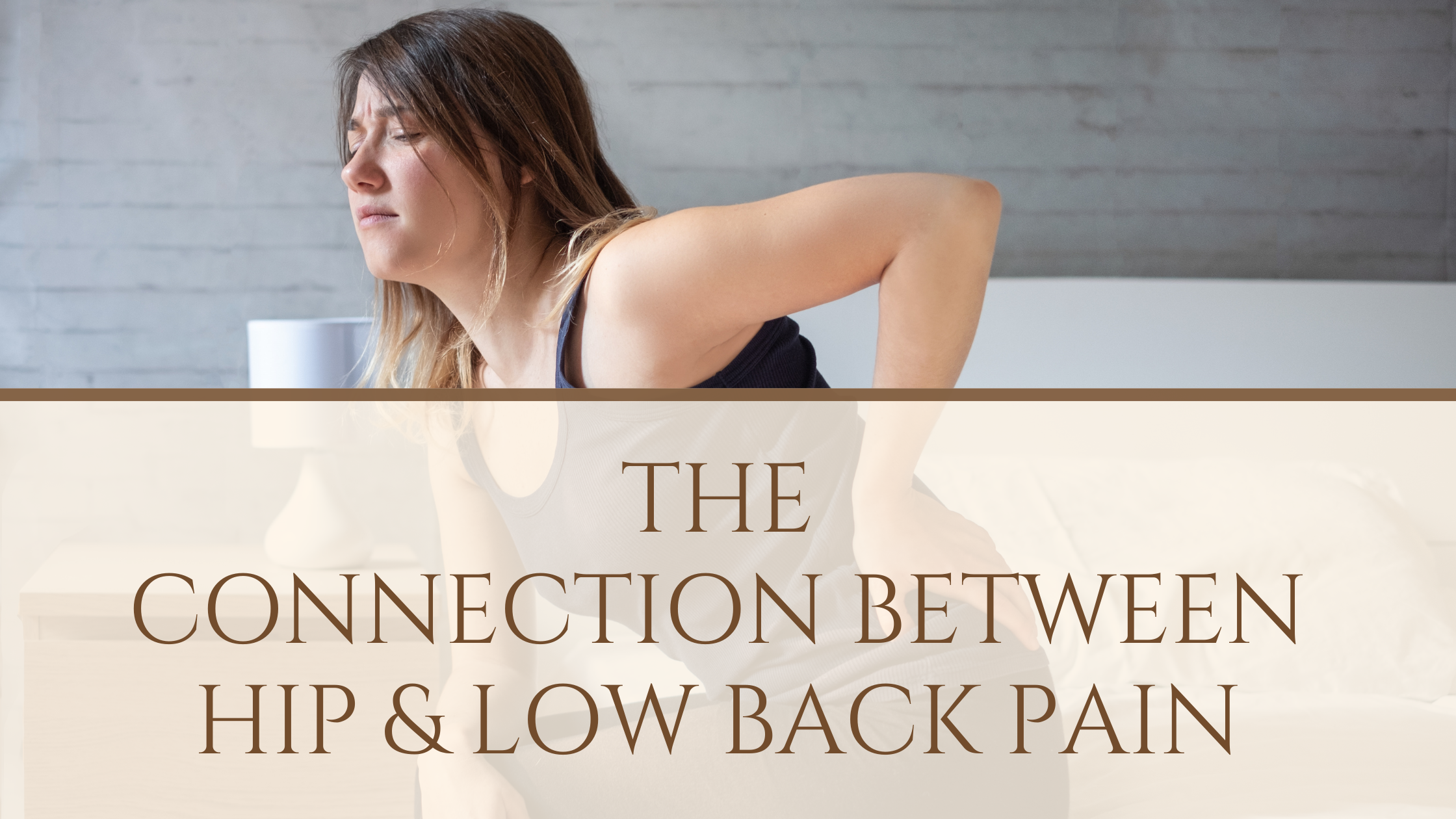Explore 👥 Memberships, 💳 Payment Plans, and 🏷️ Current Offers!

The body is intricately designed with nerves, muscles, connective tissues, and so much more, that intertwine to form a beautiful structure capable of everything from minute movements to surviving in some of the harshest conditions on earth. But with these intricacies comes vulnerability, so it’s no surprise that we experience pain and injury from time to time. What you may not realize though, is that sometimes the pain you feel isn’t necessarily caused by something in the area you feel it. For example, when you have an injury to your hips or pelvis, it can often cause back pain. Due to the proximity of structures, the nerves that travel throughout the area, and the mobility of the joints throughout, your body and brain can interpret your hip/pelvic problem as back pain and your back problem as hip/pelvic pain.
The lumbar region of the spine (lower back) houses all of the nerves that supply feeling and motor control to the entire lower body; from the low back itself to the hips, knees, and down to the tips of your toes. While this area can sustain a lot of abuse, due to the immense amount of movement it is capable of and the stress that our daily lives can put on it, it is also the most susceptible to injury. Here's a few reasons you may have this hip/back pain connection.
A pinched nerve root at the lumbar spine due to a bulging or herniated disc may result in significant sharp pain along a nerve like the sciatic nerve which runs from the middle of the low back all the way down the back and side of the leg to the foot. Sometimes this pain stops at the buttock and at other times it may shoot all the way down to the toes.
Your posture may also have an effect. This isn’t to say that you need to immediately “fix” your posture as that may not be necessary. What I’m referencing is more so when you begin to exhibit an abnormal-to-you posture, like suddenly sitting all day when you’re used to walking, or crossing your legs a lot when you haven’t before. These seemingly subtle changes may actually result in some significant shifts in the joints of the pelvis and spine, causing pain. If you haven’t had a major shift in how you sit, stand, or walk throughout your day, it may be that your posture has changed due to your pain rather than the other way around. The new posture you’ve adapted may be your body’s way of compensating for an injury or otherwise protecting itself from further damage.
If your hips are off balance in some way, let’s say they rotate a little more toward the back than normal; what we would refer to as a posterior pelvic tilt, this puts unnecessary pressure on the lumbar spine. By the pelvis sitting in this backward rotation, even just a few degrees off, the pelvic bones begin to pull on ligaments and muscles throughout the hips, low back, and even the legs. This can cause you to round your low back more, putting even more pressure on that lumbar spine. It’s a little like the chicken and egg conundrum; although we may not be able to pinpoint which came first, it’s best to treat both to ensure the entire situation is resolved.
These are just a few examples and showcase why we focus on a broader area than just your point of pain. So, when you arrive and complain of back pain, we’ll also be assessing and working with your hips to ensure we address the real problem to get you out of pain and back to life. Depending on the real problem, you may need massage, exercise, rest, stretching, or it may be best to see your physician. To help you determine what’s really going on and how to move forward, make an appointment at Wings Wellness today, and let’s figure it out together so you can get back to doing what you enjoy!